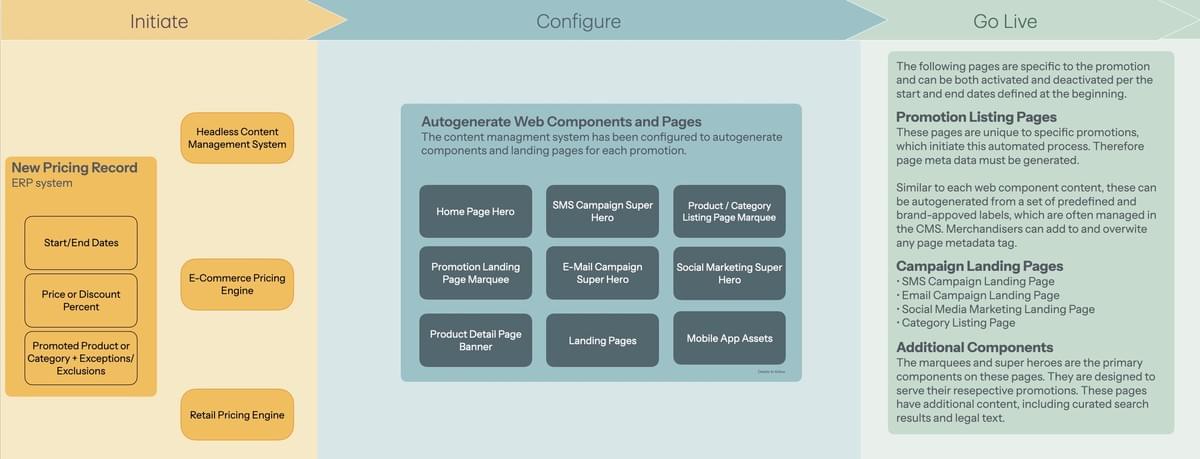


Steve Clark's Professional Portfolio


Steve Clark's Professional Portfolio

Automating Pricing Promotions
Promotional pricing drives many e-commerce customer engagements. Regular promotions create opportunities for social media advertising, email and text messaging, search engine findability, and other e-commerce channels..
Many roles are responsible for producing these e-commerce experiences, and many backend systems are affected. This is a cumbersome exercise for most enterprises. It is so complex that marketing organizations can only offer a suboptimal number of promotions.
With a headless content management system (CMS) architecture and simple web service scripts, all web assets can be generated the moment a promotion is created in an enterprise resource planning (ERP) system or pricing engine.
Any e-commerce operation can automate most of their promotional pricing with the the systems and platforms already in place, specifically a CMS and an ERP. Automation is further enhanced when a structured design system has been established along with a consistent content strategy.

Importance of a Design System and Content Strategy
The ERP and CMS are no-brainers. They are at the center of every e-commerce operation. However, most organizations do not have a design system, and oftentimes content strategy means having someone to write product descriptions and marketing blurbs.
Design Systems are not difficult to make. In this case we could start with defining our heroes and marquees. This means defining all the responsive permutations, integrations, authoring dialogs, SEO, accessibility, analytics, and user testing. Integrations are key, since our headless CMS will be consuming and presenting content from the ERP and from the Content Library, which is a function of content strategy.
For each hero and marquee we will need predefined eyebrows, titles, subtitles, descriptions, and blurbs for each promotion type. Our authors could overwrite any of these, however, a comprehensive set of text strings defined by our content strategist will help our marketers and web merchandisers to curate unique content every time.

This example shows how a hero component is defined in design system. It’s an annotated image, or a live example, with details of each element. It slices the hero by:
- UI/UX - The expected user functions.
- Content - How it is authored
- Audience - Oftentimes the user testing results
- Architecture. - The APIs and CMS integrations
- Findability - SEO and site search settings
- Accessibility - How it complies with WCAG
By defining the building blocks of the online experience, business users can easily deploy rich variations of content throughout the experience with minimal training and technical expertise.
Steve Clark
Full-Stack Product Manager/Web Application Design Architect
t3xt me at fore zero ate dash five six nine dash won seven six zero
in other words
00000100 00000000 00001000 00000101 00000110 00001001 00000001 00000111 00000110 00000000

